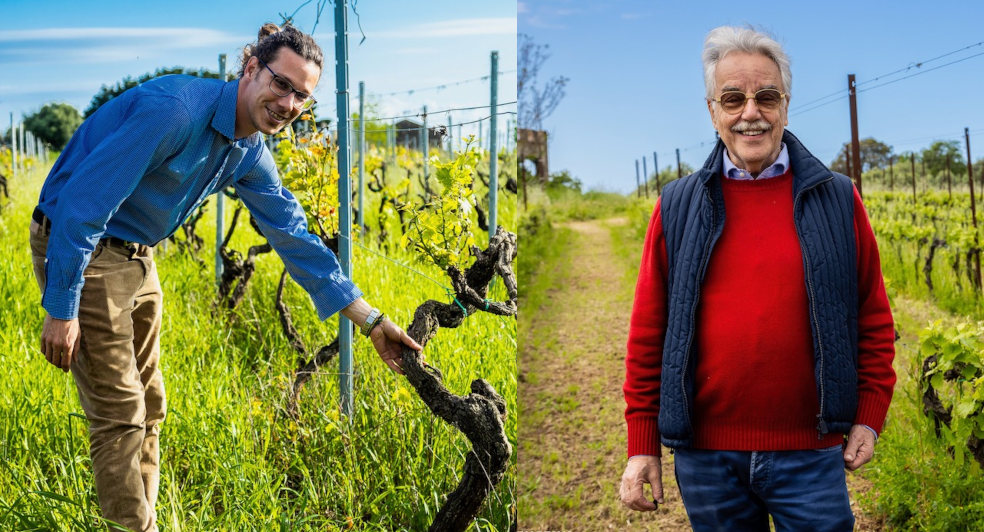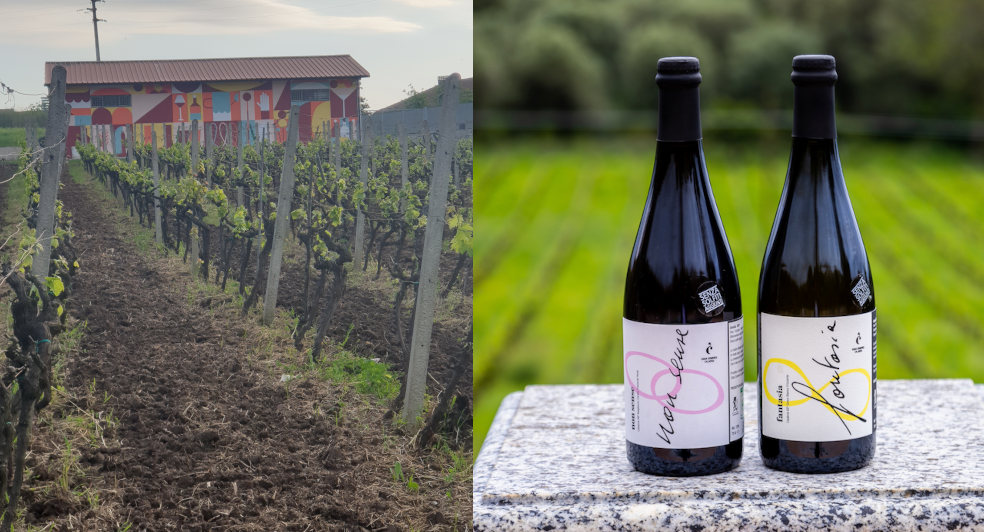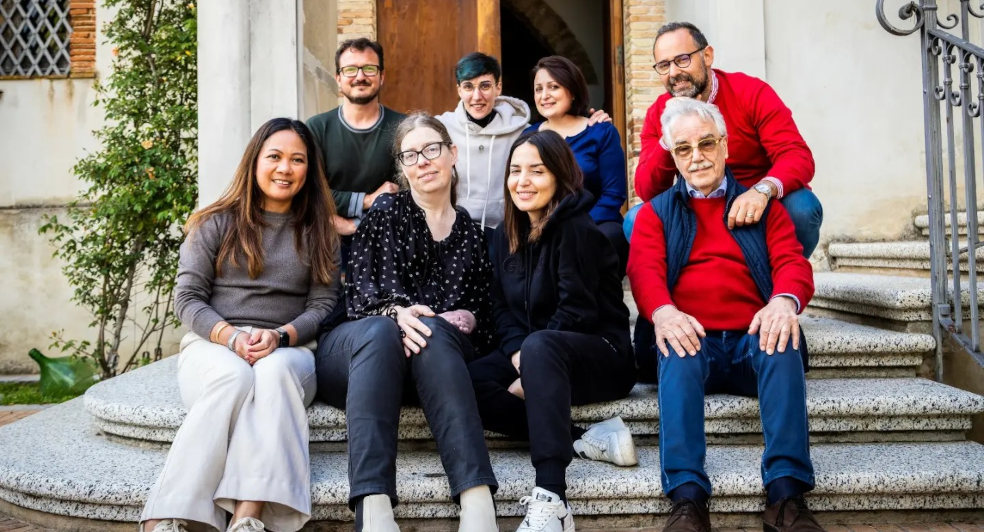Costa degli Dei Wines on the Rise in Calabria
15th February 2024

Wine production in the Costa degli Dei (Coast of the Gods) area along the Tyrrhenian coast in Calabria is starting to create a name for itself. Calabria has been on the rise for the last decade regarding small production and artisanal wineries, while from the post-WWII era, the larger-scale wineries had dominated the scene.
Phylloxera and mass emigration are other factors that caused a decline in Calabrian winemaking during the 19th-20th centuries. If we look beyond the last century, Calabria has a history that dates to ancient times and a rich viticultural heritage with grape varieties, especially in Costa degli Dei, such as Magliocco Canino and Zibibbo.
Costa degli Dei, with its panoramic view of Stromboli, the Aeolian Islands, and the northeastern coast of Sicily, is an area believed to have been touched by Greek gods. This is because the Greek settlers who founded colonies in Calabria in the VII century AD promoted myths and legends that the Greek Gods of Olympus felt at home in Calabria for its charm. For example, it is said that Heracles, the son of Zeus and Alcmene, “threw his anchor” in Tropea on his way back from other adventures.
Towards an Appellation that Defines the Territory

In this historically important area, seven smaller wineries – Casa Comerci, Cantine Artese, Marchisa, Masicei, Origine&Identità, Cantine Benvenuto e Cantine Rombolà – founded the Associazione Viticoltori Vibonesi (Vintners’ Association in the Vibo Valentia area) in 2020 to together promote wine production in the area.
There are about 8900 hectares under vine for wine production in Calabria, of which less than 300 hectares are in the Vibo Valentia province (see Istat data of 2022, the Italian National Institute of Statistics). Although the area is tiny, the Vintners’ Association believes strongly in its history and potential.
Despite the important viticultural history of the region, “Vibo is the only province that does not have any recognized wine appellations,” says Renato Marvasi, the current president of the Vintners’ Association and owner of Marchisa winery in Drapia, close to Tropea. This forces the producers to label their wines under the general Calabria IGT denomination.
Renato is a young graphic designer who decided to move to Tropea from Rome ten years ago and take over the family vineyards wanting to combine art and winemaking. On his mother’s side, his family is local nobility – Marquises of Tropea – who have been renting out their land while living in Rome for generations.
“Perhaps it was a touch of madness, as well as the curiosity to live in contact with nature. These are beautiful, uncontaminated places, and I was intrigued by the place and nature” continues Renato Marvasi.
“We are working with technical experts to apply for a DOC designation,” explains Rosa Comerci, Estate Manager at Casa Comerci, a winery focused on producing organic and low-intervention wines, mainly with Magliocco Canino and Greco grapes. The Vintners’ Association considers the institution of a DOC of uttermost importance because it would strengthen the local territory’s image and economy.
The DOC area will span from Nicotera in the south via Tropea and up to Vibo Valentia further north, including the inland locations of Filadelfia, Drapia, Maierato, Spilinga, and Limbadi. The soil composition varies from sandy and silty to granite soil close to the sea, to clay with a higher calcareous level inland.
Zibibbo and Magliocco Canino will be the two grape varieties in focus in the future DOC. The DOC designation is important to “finally give an identity to Zibibbo and Magliocco Canino” in the area, explains Mario Romano of Origine & Identità winery close to Tropea. He makes wine in natural style, mainly the Champenoise method, with sparkling Zibibbo and Magliocco Canino wines but also dry white and red wine. Therefore, the seven producers in the association have decided that the DOC wines will need to be produced as monovarietal Zibibbo and Magliocco Canino.
Zibibbo and Magliocco Canino, Restoring the Past
Zibibbo, from the Arabic word zabīb referring to a dried grape, is an aromatic grape equivalent to Moscato di Alessandria. It is a grape variety with an unmistakable native connection to Sicily, even though Moscato di Alessandria is believed to have its origin in Alessandria in Egypt. Having said that, Ian D’Agatha argues that it might be more presumable to believe it comes from Sicily, but more research is needed in this regard. (See Ian D’Agatha, Native Wine Grapes of Italy, p. 111.) The Zibibbo has historically been cultivated in the Costa degli Dei area in Calabria, but it was only recuperated recently after having been almost forgotten for more than a century.
When Giovanni Benvenuto of Cantine Benvenuto in 2002 moved from Abruzzo to Francavilla Angitola, close to Pizzo, to take over his paternal grandfather’s vineyards, he soon discovered he could not legally produce wine with the Zibibbo grapes he cultivated because they were only registered for use as table grapes in the region. He started a 10-year long bureaucratic process to get the Zibibbo admitted as a grape for wine production in Calabria. Today, he is continuing to preserve the heritage of the Zibibbo grape producing mainly dry Zibibbo wines with characteristically very mineral and sapid notes.
The Magliocco variety was first officially mentioned in documentation by as early as the 16th century, writes Ian D’Agatha, but it probably dates to far more ancient times. Some claim it to be a grape of Greek origin; however, its provenance is uncertain. Magliocco is a grape variety that has been given very little attention until a couple of decades ago, and it can create a bit of confusion because there are two different cultivars: Magliocco Canino and Magliocco Dolce. Magliocco Canino, registered in the Italian National Register in 1971, is cultivated mainly along the Tyrrhenian coast of Calabria and especially in the Vibo Valentia province where it owes its restoration to Casa Comerci. “This [the Costa degli Dei area] has always been the home of Magliocco Canino, and we want to restore its importance,” underlines Rosa Comerci.
Magliocco Canino, with oval grapes and medium-sized bunches shaped like a fist or a mallet (maglio), is a grape that have some difficulties to reach ripeness and it is harvested late in autumn. It is a grape rich in anthocyanins and polyphenols, that give colourful, fruit-forward, intense, and elegant wines with a great aging potential. It is a grape with great versatility as it can be produced in the form of Champenoise method, ancestral method, white wine, rosé, and young as well as aged red wine.
Domenico Silipo owns Casa Comerci, whose grandparents, Francesco and Rosina Comerci, founded the farm in Nicotera in the late 19th century. Domenico is convinced that only steel can express the grape variety honestly without adding or leaving traces of something that is not a part of its identity. He says that he found old bottles with screw caps from 1973 and 1974, aged only in steel and bottle, that belonged to his father still in excellent shape and where the colour had not changed much. Usually, he explains, the colour would become a bit like Marsala over the years, but not in this case. “If Magliocco Canino is capable of this, why offend it by aging it in something else,” he exclaims.

Non Sense IGT Rosato Vino Frizzante, Ancestral Method, 2021 Casa Comerci
This sparkling wine is made using the ancestral method and is created solely with Magliocco Canino grapes. It’s the perfect drink to enjoy while taking in the breathtaking view of Costa degli Dei in Calabria. With its fun, sparkly, and Mediterranean character, you can feel notes of pomegranate, raspberries, strawberries, a hint of baking soda, field herbs, maquis, and more. Despite being smooth and velvety on the palate, it has a good structure and grip. Non Sense pairs well with seafood and pizza.
20-18 Zibibbo Metodo Classico, Origine & Identità
When I visited Casa Comerci last year, I was fortunate enough to attend a lunch organized by them where I met Mario Romano from Origine & Identità. During lunch, I got to taste his two 2018 Champenoise method wines made with Zibibbo and Magliocco Canino respectively. Although the samples I tasted were not yet labelled, the 2021 vintage is now available on the market. The wine is aged for at least one year on the lees before going through a strictly manual disgorging process.
I found the wine to have good acidity and length, with fruity and floral notes of maquis, acacia honey, apricot, and dry fruit, and more. It paired perfectly with the local Calabrian delicacies. It is worth noting that the “2018” on the label does not refer to the vintage but to the year when Mario started producing wine.
Images Belong To @Rowena Dumlao-Giardina
![]()
Katarina Andersson
An ex-academic with a Ph.D. in history turned wine writer. She also has a sommelier diploma. She loves history and telling the story about the people behind a wine, a winery or a region.
